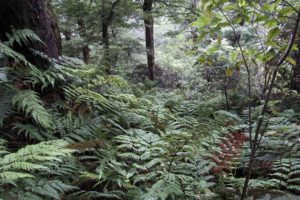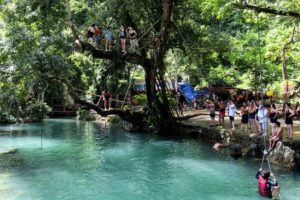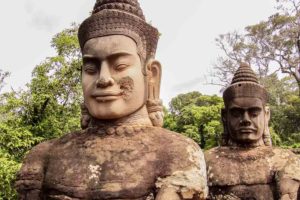Sobering, confronting and depressing are only a few words that come to mind when experiencing the Tuol Sleng Genocide Museum. Horrific, evil, heinous, repulsive, unspeakable and harrowing are just some that can be used to describe what went on there between 1975 and 1979; a three-year, eight months, and 20-day period in Cambodia’s history that decimated the population. Before Pol Pot and his Khmer Rouge were driven out of Cambodia by their defectors and the Vietnamese Army, Pol Pot’s regime had killed approximately 2 – 3 million people… more than 25% of the Cambodian population.
I have decided to put some of my thoughts online because of something I read in the museum. It went something like this…
Is it possible to learn sooner the next time a catastrophe is occurring? Could we, by better understanding the reasons behind why we look the other way, possibly prevent ourselves from making the same mistake again? Can we learn from history?
Toul Sleng Museum is in the city of Phnom Penh, Cambodia. During Pol Pot’s Khmer Rouge regime it was a school that converted to S21 (Security Prison 21), a torture, interrogation and execution centre. It is now a museum that tells and depicts what went on at S21. It is hard to think of it as a ‘tourist attraction’… in fact, I would say it is not an “attraction”. If you want entertainment in Cambodia, go somewhere else. This museum is confronting and uncomfortable; I’m not ashamed to say it brought me to tears. If, on the other hand, you want to learn some of Cambodia’s history, to understand the people and the country you are visiting, and you are not afraid to face the truth about the other part of human nature, a part I find difficult to understand; a part of humanity that is seen everywhere, not just in Cambodia, then visit this museum. As an educational tool, it is an edifying experience.
Psychopaths such as Pol Pot, Adolf Hitler, and Abubakar Shekau (plus many more) exist in almost every country, and the atrocities they commit appal most of us. The genocide between 1975 and 1979 is a small part of Cambodia’s history, but the destruction it caused is astronomical. As I ride around Cambodia, it is heart-wrenching to know that anyone around 40 years of age and older has lived through these atrocities; atrocities which I have only read about at the museum and in the book “First They Killed My Father” by Loung Ung.
I have no photos to show you, as the signs around the museum specifically ask you not to take photos or videos… However, many people chose to ignore the signs and take pictures and videos regardless. As I wandered the museum reading the stories of the seven adults who survived S21, taking photos was the furthest thing from my mind.
Of the 20,000 people taken to S21 for interrogation, only seven adults and four children survived. S21 was only one of Cambodia’s approximately 150 torture, interrogation and execution centres at the time of Pol Pot’s regime. The museum has stories from some of the people who worked at S21 and information about the trials of the Khmer Rouge leaders who have been or are being charged with crimes against humanity (see below for more info on the trials).
The genocide during this time was due to Pol Pot’s insane vision of a pure communist society. Education, commerce, ownership, and religion were forbidden.
“All foreigners were thus expelled, embassies closed, and any foreign economic or medical assistance was refused. The use of foreign languages was banned. Newspapers and television stations were shut down, radios and bicycles confiscated, and mail and telephone usage curtailed. Money was forbidden. All businesses were shuttered, religion banned, education halted, health care eliminated, and parental authority revoked. Thus Cambodia was sealed off from the outside world.” Source – The History Place
Anyone Pol Pot deemed a threat to his authority was tortured for a confession and then killed. Entire families were killed. One of Pol Pot’s slogans went… ‘clearing grasses, it shall dig it’s entire root off’. He feared to leave anyone in the family alive, and he had them all killed to avoid anyone wanting to seek revenge.
During Pol Pot’s regime, families were separated. Strong young children sent to become soldiers. Urban dwellers were forced from their cities to work in labour camps or in rural areas on collective farms growing food to sell to china for arms and ammunition. Many people starved to death while surrounded by fields of food. The combined effects of strenuous working conditions, starvation, malnutrition and inadequate medical care caused many deaths.
Visiting Tuol Sleng – I suggest, if you get the chance, reading one of the many books written by the survivors of this horrific time in history before going to the museum and The Killing Fields. It is a gruesome history; a gruesome story, but one that should not be forgotten. It is a time in history that should never happen again… anywhere.
Cambodia is not alone in its history of genocide. Throughout history, there have been many cases of Genocide… and sadly, genocide is not only a part of humanity’s history; it is still occurring – Genocide Watch.
More Information
Currency
KHR – Cambodian Riel written here as ៛
Note: In Cambodia, use Riel and the US dollar. At the time of writing, most places will accept both currencies… but have Riel for use when making small purchases in local shops or rural areas. Most places will use an exchange rate of ៛4000 to the dollar. Some shops have up-to-date exchange rates.
Toul Sleng Museum
Location – Corner of Street 113 & St 350, Phnom Penh, Cambodia
Open Hours – Open daily from 07:00 to 11:30 and from 14:00 until 17:30.
Cost – USD 2.00
For more information, visit the Toul Sleng Museum website.
Accommodation
We typically book our accommodation through booking.com. We like the convenience of booking online, and we are usually able to pay for our accommodation on arrival at the hotel/resort or room. booking.com advertise many different accommodation styles in Phnom Penh, so you are sure to find the perfect place.
We stayed at Velkommen Guesthouse
Pros – Air-con, cable TV, safe. A five-minute walk from the National Museum, Royal Palace, Central Market and Old Market.
Cons – very basic bathroom, and it can be noisy at night.
Our Verdict – Very convenient location
Across the road is Velkommen Backpackers
iVisa
iVisa makes getting a visa super easy. You can even get passport and visa photos done!
More Cambodia?
11 Cambodian Street Foods You Must Try!
Exploring Cambodia on a Motorbike – Part One
Exploring Cambodia on a Motorbike – Part Two
5 Crazy Foods we ate in Cambodia!
Like this post? Please share or pin using the images below, thank you!










7 Comments
Leave your reply.